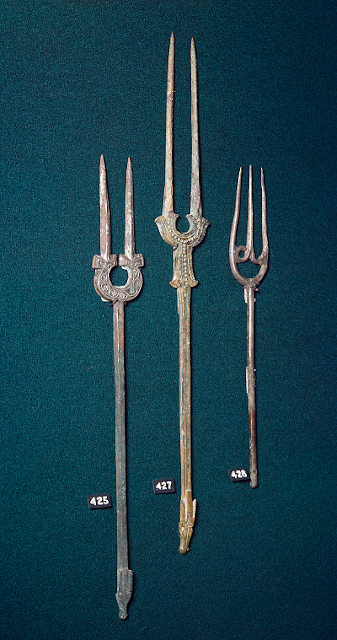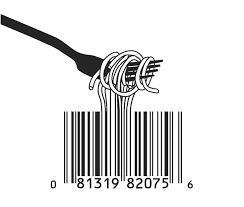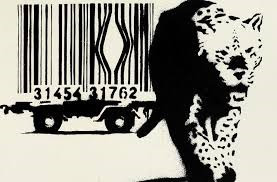-------oOo------
Pinky Swear:
To make a pinky promise, or pinky swear, is a traditional gesture most commonly practised amongst children involving the locking of the pinkies of two people to signify that a promise has been made. The gesture is taken to signify that the person can break the finger of the one who broke the promise.
This promise is said to have originated in Japan in the 1600’s, where it is known as ‘yubikiri’, meaning “finger cut-off”. Supposedly, people in Japan believed that if you break a pinky promise, you have to cut off your pinky finger in return. It is also known as yubitsume, a traditional Japanese ritual where the pinky finger is amputated to atone for an offense. Remind anyone of John Wick?
-------oOo------
Ketchup:
Ketchup or catsup is a table condiment with a sweet and sour flavour. The unmodified term ("ketchup") now typically refers to tomato ketchup, although early recipes used egg whites, mushrooms, oysters, grapes, mussels, or walnuts, among other ingredients.
So what’s the difference between ketchup, as the seppos call it, and tomato sauce as we in Oz use? In the Australian market there are two key differences between tomato ketchup and tomato sauce – the flavour and the thickness. In other countries the same product may be called something else but for Australia, ketchup is sweeter and thicker than traditional Australian “dead horse” which is more sour and more runny.
Ketchup traces its roots to late 17th-century China. In the 1690s a sauce of pickled fish and spices named koe-chiap gained popularity. One hundred years later, it had migrated and morphed into an English staple and then an American one.
The sauce that served as a starting point for modern ketchup was effectively a fermented paste derived from fish entrails and soybeans lauded for particularly strong pungence, and ability to hold up over the course of a long journey at sea.
It was precisely that last quality, in addition to its satisfyingly salty taste, that made the condiment an appealing commodity for British sailors along trade routes in southeast Asia. By the 1700s, this fermented fish paste had won enough of them over that they endeavoured to bring it back home to England.
-------oOo------
Anericans voting on a Tuesday:
Why do Americans vote on a Tuesday in November? Why not, say, a Saturday in May, which seems a much more civil pronouncement?
Blame it on their agrarian past.
In early November, most of the crops were in, yet the dirt roads remained dry enough to travel over by horse and buggy. And in the time when these things were being decided, polling stations weren't ubiquitous. Commonly, it took an overnight trip to reach a polling station at the county seat. One couldn't travel on Sunday, so Monday was ruled out as Election Day. Likewise, most markets were held later in the week, so after voting early on Tuesday morning, farmers could quickly reverse course to make it home in time to sell their recently harvested crops.
The fact that Election Day falls on a Tuesday has become controversial in recent decades, as many people might be unable to vote because they have to work. It is a public holiday in some states, including Delaware, Hawaii, Illinois, Kentucky, Louisiana, Montana, New Jersey, New York, Virginia, West Virginia, as well as the territory of the Northern Mariana Islands and Puerto Rico.
Some other states require that workers be permitted to take time off with pay. California requires that employees otherwise unable to vote must be allowed two hours off with pay, at the beginning or end of a shift. A federal holiday called Democracy Day, to coincide with Election Day, has been proposed, and some have proposed moving election day to the weekend. Other movements in the IT and automotive industries encourage employers to voluntarily give their employees paid time off on Election Day.
Most states allow early voting, letting voters cast their ballots before Election Day. Early voting periods vary from 4 to 50 days prior to Election Day.
Time to adopt the Australian system:
- Voting is on a Saturday.
- Voting is compulsory.
- You can vote by post or absentee beforehand
- If attending in person, polling stations have sausage sizzles selling “democracy sausages” (with tomato sauce, not ketchup):
Keep your Michelin star restaurant food, this is the best there is.
-------oOo------
Panama hats:
The Panama hat is from Ecuador.
Woven from the straw of the toquilla plant, this lightweight, wide-brimmed piece of headgear provided an ideal shield from the tropical sun.
Why Panama, then? After the hat made its way up from South America to be shipped to Europe and North America, it took its name from the Panamanian ports from which it sailed.
These hats grew in popularity in the 19th century when people began to appreciate the fine craftsmanship and superior quality of its weaves. In 1906, former US President, Theodore Roosevelt was photographed wearing a Panama hat during his visit to the construction site of the Panama Canal.
Former US President Theodore Roosevelt with pilot Art Smith at the Panama Pacific International Expo
From this point onwards, the Panama hat became a signature style of elegance and sophistication amongst people of elite status.. In England, they are positioned as the most fashionable summer hats.
The black band with which the majority of Panama hats are trimmed originates from 1901, the year of the death of Queen Victoria.
Sean Connery
-------oOo------
Forks:
While the ancient Greeks wielded large, two-pronged tools to carve and serve meat, seventh-century Middle Eastern potentates were the first to bring a fork to their lips.
Around the 11th century, the first fork reached a Venetian table in the hand of a Byzantine princess, to the horror of local priests, who maintained that God had invented fingers for eating.
It took more than 500 years for Italians to adopt the utensil, which raises the question, How did they twirl pasta before.
Silver forks. Sassanid civilisation, Iran, 6th-7th century
“I think the thing I admire most about the Chinese is that they're hanging in there with the chopsticks. Because if you think about it, you know, they've seen the fork by now. I'm sure they've seen the spoon. They're going, "Yeah, they're okay. We're gonna stay with the sticks." I mean, I don't know how they missed it. Thousands of years ago, Chinese farmer gets up has his breakfast with the chopsticks goes out and works all day in the field with a shovel. Hello? Shovel? Not going out there plowing 40 acres with a couple of pool cues.”- Jerry Seinfeld
-------oOo------
Barcodes:
We have the Boy Scouts to thank for barcodes.
As a kid, N. Joseph Woodland learned Morse Code through his participation in the Scouts. Years later, when he was looking for a way to efficiently imprint data onto products for tracking and organization, he thought back to that childhood experience. He wondered if there was a way to visually render a version of Morse Code’s simple-but-virtually-limitless method of communication.
As Woodland told Smithsonian Magazine, inspiration struck at the beach: “I poked my four fingers into the sand and for whatever reason—I didn’t know—I pulled my hand toward me and drew four lines. I said: ‘Golly! Now I have four lines, and they could be wide lines and narrow lines instead of dots and dashes.’”
Woodland worked with a friend, Bernard Silver, to turn that moment of insight into the precursor to modern barcodes. The men sold their patent for only $15,000, but years later, with the help of Woodland’s IBM colleague George Laurer and the supermarket executive Alan Haberman, barcodes became the industry standard.
Some barcode art:
-------oOo------















No comments:
Post a Comment
Note: Only a member of this blog may post a comment.